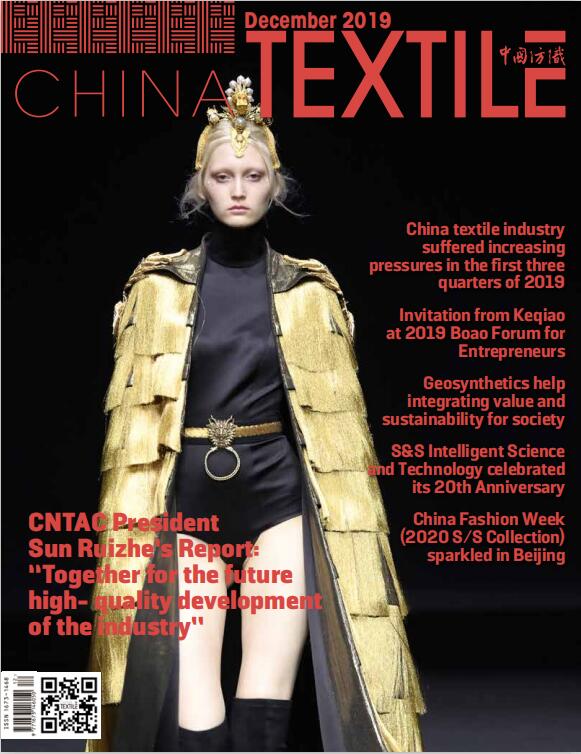Chinese clothing exports bloom with resilience amidst challenges
Jul 11, 2025 | by Qiu Shuchen
Since the beginning of this year, the China-US economic and trade tensions have brought many challenges to China's clothing export companies. Nevertheless, in the face of difficulties, China's clothing foreign trade still shows strong resilience and adaptability. From January to May, China's clothing exports showed characteristics such as increased volume, lower prices, category differentiation, and multi-point market layout. Meanwhile, Chinese clothing companies have actively responded to trade friction impacts by closely monitoring tariff negotiations, accelerating transformation and upgrading, exploring diversified international markets, and deepening domestic markets.
Exports show many characteristics
According to the latest data from the General Administration of Customs, in May, China's textile and clothing exports reached US$26.21 billion, a year-on-year increase of 0.6% and a month-on-month increase of 8.4%. The growth momentum mainly came from clothing exports. During the same period, clothing exports amounted to US$13.58 billion, up 3% year-on-year and 17% month-on-month. In the first five months, China's textile and clothing exports totaled US$116.67 billion, a year-on-year increase of 1%, of which clothing exports stood at US$58.2 billion, a year-on-year decrease of 0.5%.
At present, China's clothing exports exhibit a trend of increased volume, lowered prices and category differentiation. This reflects an acceleration in structural adjustments within China's clothing export sector amid dual pressures from intensifying global market competition and trade frictions. Data show that in the first four months, the export value of woven clothing was US$19.09 billion, a year-on-year decrease of 2%, the export volume was 4.52 billion pieces, a year-on-year increase of 8.6%, and the export unit price decreased by 9.8% year-on-year; the export value of knitted clothing was US$19.76 billion, a year-on-year decrease of 2.1%, the export volume was 7.22 billion pieces, a year-on-year increase of 10.4%, and the export unit price decreased by 11.3% year-on-year; the export value of clothing accessories was US$4.21 billion, a year-on-year increase of 1.7%. In terms of categories, the export of trousers, shirts, sweaters, and gloves grew rapidly, whereas the export of overcoats/winterwear, underwear/pajamas, knitted T-shirts, and bras declined.
In terms of market structure, China's clothing exports to the United States decelerated, while those to the European Union rebounded. Data show that in the first four months, China's clothing exports to major Western developed economies (including the U.S., Canada, EU, UK, Japan, Australia, and New Zealand) reached $24.2 billion, a year-on-year increase of 3.3%. Among them, clothing exports to the United States amounted to US$9.44 billion, up 2% year-on-year; clothing exports to the European Union amounted to US$6.99 billion, up 7.4% year-on-year; clothing exports to Japan amounted to US$3.89 billion, up 1.5% year-on-year; clothing exports to the United Kingdom amounted to US$1.37 billion, up 5.9% year-on-year; clothing exports to Canada amounted to US$0.78 billion, up 14.4% year-on-year; and clothing exports to Australia amounted to US$1.51 billion, down 8.1% year-on-year. At the same time, China exported US$2.12 billion in clothing to South Korea, up 4.7% year-on-year; US$3.16 billion in clothing to Latin America, up 17.5% year-on-year; and US$2.61 billion in clothing to Africa, up 4.4% year-on-year. This change in the market structure shows that China's textile and clothing export market is expanding from traditional European and American markets to diversified markets.

Enterprises actively respond to challenges
Faced with the volatile international landscape, relevant persons in charge of the China Chamber of Commerce for Import and Export of Textiles believe that only by maintaining keen market insight and flexible adaptability can Chinese clothing companies remain invincible in the fierce international competition.
Currently, Chinese clothing companies must closely monitor tariff developments between the United States and relevant countries, and flexibly adjust product pricing and market strategies accordingly. At the same time, enterprises can also optimize product structure according to tariff adjustments and increase the export proportion of high value-added products to enhance the competitiveness of products in the international market.
Chinese clothing enterprises should also accelerate the transformation and upgrading, focusing on improving product design and innovation capacity, and optimize the global production networks. On the one hand, enterprises can increase R&D investment, improve product design level and technological content, and meet the international market's demand for high-quality and personalized products; on the other hand, enterprises can consider rationally deploying production capacity on a global scale, reducing production costs and improving production efficiency.
In terms of opening up international markets, Chinese clothing enterprises should pursue diversified layouts to reduce reliance on single markets and enhance development in emerging economies. ASEAN, Africa, Latin America and other regions have rapid economic development and huge market potential, but they also face problems such as imperfect infrastructure and large cultural differences. Therefore, enterprises need to have a deep understanding of local market demand and policies and regulations, formulate targeted market strategies, and improve the adaptability and competitiveness of products in emerging markets.
In addition, Chinese clothing enterprises should also explore the domestic market with huge potential. Enterprises can promote the formation of a new pattern of coordinated development of domestic and foreign trade by enhancing domestic sales channels and brand influence.








